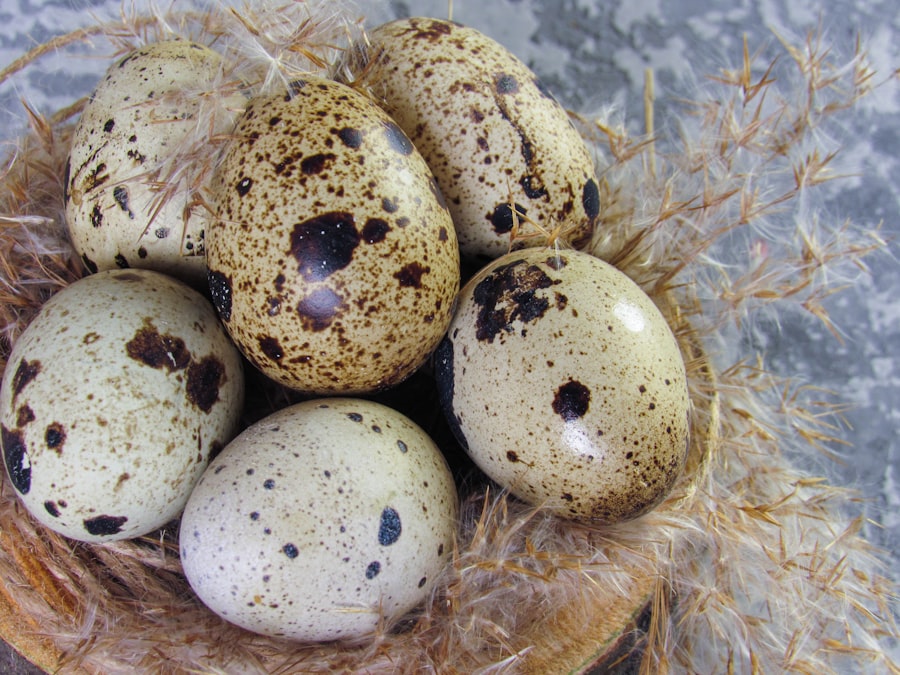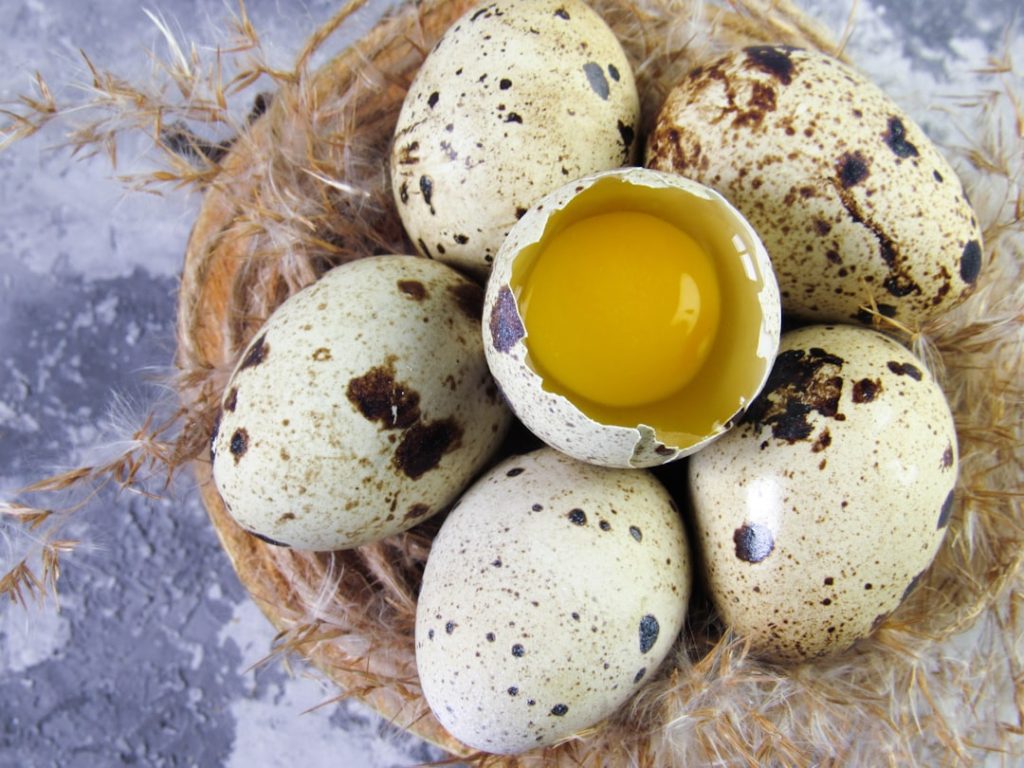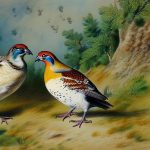Common quail breeding is a rewarding and fulfilling endeavor for many poultry enthusiasts. Quails are small, ground-dwelling birds that are known for their delicious eggs and meat. Breeding quails can be a profitable business or a fun hobby for those who enjoy raising and caring for birds. Quails are relatively easy to breed and require minimal space, making them an ideal choice for backyard breeders or small-scale farmers. In this article, we will explore the various aspects of common quail breeding, including selecting the right breeding stock, understanding quail breeding behavior, creating the ideal breeding environment, egg incubation and hatching, caring for quail chicks, and common challenges in quail breeding and how to overcome them.
Table of Contents
- 1 Selecting the Right Breeding Stock
- 2 Understanding Quail Breeding Behavior
- 3 Creating the Ideal Breeding Environment
- 4 Egg Incubation and Hatching
- 5 Caring for Quail Chicks
- 6 Common Challenges in Quail Breeding and How to Overcome Them
- 7 FAQs
- 7.1 What is the breeding season for common quail?
- 7.2 How many eggs does a female common quail lay?
- 7.3 How long does it take for common quail eggs to hatch?
- 7.4 What is the incubation period for common quail eggs?
- 7.5 At what age do common quail reach sexual maturity?
- 7.6 What is the average lifespan of a common quail?
- 7.7 How can I encourage breeding behavior in my common quail flock?
Key Takeaways
- Common quail breeding is a rewarding and relatively simple process that can be done on a small scale.
- Selecting the right breeding stock is crucial for successful quail breeding, with factors such as health, temperament, and productivity to consider.
- Understanding quail breeding behavior, including mating rituals and nesting habits, is important for creating a conducive breeding environment.
- Creating the ideal breeding environment involves providing adequate space, nesting materials, and a balanced diet for the quail.
- Egg incubation and hatching require careful monitoring of temperature and humidity, as well as proper handling of the eggs.
Selecting the Right Breeding Stock
Selecting the right breeding stock is crucial for successful quail breeding. When choosing breeding stock, it is important to select healthy, disease-free birds with good genetic traits. Look for birds that are active, alert, and have bright eyes. Avoid birds that appear lethargic or have any signs of illness. It is also important to select birds with good conformation and body size. Breeding stock should be of the appropriate age for breeding, typically around 6-8 weeks old. It is also important to consider the ratio of males to females in the breeding stock. A good rule of thumb is to have one male for every four to six females to prevent overbreeding and aggression among the males. Additionally, it is important to rotate breeding stock regularly to prevent inbreeding and maintain genetic diversity within the flock. By carefully selecting the right breeding stock, you can ensure a healthy and productive quail breeding program.
When selecting breeding stock, it is important to consider the specific breed of quail you are interested in breeding. There are several different breeds of quail, each with its own unique characteristics and traits. Some popular breeds for breeding include Coturnix quail, Bobwhite quail, and California quail. Each breed has its own specific requirements and considerations for breeding, so it is important to research the breed you are interested in and select breeding stock that meets the standards and requirements for that particular breed. Additionally, consider the purpose of your quail breeding program. Are you breeding for meat production, egg production, or as pets? Different breeds may be better suited for different purposes, so it is important to select breeding stock that aligns with your breeding goals. By carefully considering the breed and purpose of your quail breeding program, you can select the right breeding stock to meet your specific needs and goals.
Understanding Quail Breeding Behavior
Understanding quail breeding behavior is essential for successful breeding and reproduction. Quails are social birds that form strong pair bonds during the breeding season. Males will often perform elaborate courtship displays to attract females, including vocalizations, wing-fluttering, and chasing. Once a pair has formed, they will engage in mating behavior, which typically occurs in the early morning or late afternoon. It is important to provide a quiet and stress-free environment for breeding pairs to encourage successful mating and reproduction. Additionally, it is important to monitor breeding pairs closely for any signs of aggression or mating-related injuries, especially in larger breeding groups.
Quails are prolific layers and can produce a large number of eggs throughout the breeding season. Once a female has mated with a male, she will begin laying eggs within a few days. It is important to provide nesting boxes or suitable nesting areas for females to lay their eggs. Quails prefer to lay their eggs in secluded areas with soft bedding material, so providing appropriate nesting boxes or areas will encourage females to lay their eggs in a safe and comfortable environment. Understanding quail breeding behavior and providing the appropriate conditions for successful mating and egg-laying will help ensure a productive and successful breeding program.
Creating the Ideal Breeding Environment
Creating the ideal breeding environment is essential for successful quail breeding. Quails require a clean, safe, and stress-free environment to thrive and reproduce. When setting up a breeding environment, it is important to provide adequate space for breeding pairs or groups of quails. Overcrowding can lead to stress, aggression, and reduced reproductive success, so it is important to provide enough space for quails to move around freely and establish territories. Additionally, it is important to provide suitable nesting areas for females to lay their eggs. Nesting boxes or areas should be secluded, quiet, and filled with soft bedding material to encourage successful egg-laying.
Quails are sensitive to changes in their environment, so it is important to maintain a consistent and stable breeding environment. Avoid sudden changes in temperature, lighting, or noise levels that can cause stress and disrupt breeding behavior. Providing a balanced diet with access to clean water is also essential for maintaining a healthy breeding environment. A nutritious diet will support reproductive health and ensure that breeding pairs are in optimal condition for successful mating and egg production. By creating the ideal breeding environment with adequate space, suitable nesting areas, and a consistent and balanced diet, you can promote successful breeding and reproduction in your quail flock.
Egg Incubation and Hatching
Egg incubation and hatching are critical stages in the quail breeding process. Once eggs have been laid by the female quails, they can be collected and placed in an incubator for hatching. It is important to handle eggs carefully during collection and transfer to the incubator to prevent damage or contamination. Quail eggs typically have an incubation period of 17-18 days, during which they require consistent temperature and humidity levels for successful development. It is important to monitor and maintain these conditions closely throughout the incubation period to ensure a high hatch rate.
During incubation, it is important to turn the eggs regularly to prevent the embryos from sticking to the shell membrane and promote even development. Turning the eggs several times a day will help ensure that the embryos receive adequate oxygen and nutrients for healthy growth. It is also important to monitor the development of the embryos by candling the eggs periodically to check for signs of fertility and development. Candling involves shining a bright light through the egg to observe the internal structures and development of the embryo. By monitoring and turning the eggs regularly and candling them periodically, you can maximize the hatch rate and ensure healthy chick development.
Once the eggs have completed the incubation period, they will begin to hatch. It is important to provide a warm and stable environment for newly hatched chicks to prevent chilling and promote strong chick development. Newly hatched chicks should be transferred to a brooder with access to heat lamps or heating pads to maintain a consistent temperature of around 95-100 degrees Fahrenheit. It is also important to provide clean bedding material, fresh water, and chick starter feed to support the growth and development of the chicks. By carefully managing egg incubation and hatching and providing a suitable environment for newly hatched chicks, you can ensure a successful start for your quail breeding program.
Caring for Quail Chicks

Caring for quail chicks requires attention to their specific needs for warmth, nutrition, and protection. Newly hatched chicks are fragile and require a warm environment to thrive. It is important to provide a brooder with access to heat lamps or heating pads to maintain a consistent temperature of around 95-100 degrees Fahrenheit for the first week of life. The temperature can then be gradually reduced by 5 degrees each week until the chicks are fully feathered at around 6 weeks of age. Providing a warm and stable environment will help prevent chilling and promote healthy chick development.
In addition to warmth, quail chicks require access to clean water and nutritious feed to support their growth and development. It is important to provide chick starter feed with a high protein content (around 24-28%) to meet the nutritional needs of growing chicks. Fresh water should be provided in shallow containers that are easily accessible to prevent drowning. It is also important to monitor the health of the chicks closely for any signs of illness or injury. Regularly cleaning the brooder, providing fresh bedding material, and maintaining good hygiene practices will help prevent disease and promote overall chick health.
As quail chicks grow, they will become more independent and develop their natural behaviors such as scratching, dust bathing, and socializing with other chicks. Providing enrichment activities such as perches, hiding spots, and small toys will help keep chicks active and engaged as they grow. By providing a warm and nurturing environment with access to nutritious feed, clean water, and enrichment activities, you can ensure that your quail chicks grow into healthy and thriving adults.
Common Challenges in Quail Breeding and How to Overcome Them
Quail breeding comes with its own set of challenges that breeders may encounter along the way. One common challenge in quail breeding is maintaining optimal environmental conditions for successful reproduction. Fluctuations in temperature, humidity, lighting, or noise levels can disrupt breeding behavior and reduce reproductive success. To overcome this challenge, it is important to maintain a stable and consistent breeding environment with suitable nesting areas, balanced nutrition, and minimal stressors that can impact reproductive health.
Another common challenge in quail breeding is managing aggressive behavior among males during mating season. Male quails can become territorial and aggressive towards each other when competing for females during mating season. To overcome this challenge, it is important to provide enough space for males to establish territories and minimize overcrowding in breeding groups. Additionally, providing hiding spots or visual barriers within the breeding environment can help reduce aggression among males.
Disease management is also a common challenge in quail breeding that can impact overall flock health and productivity. Preventative measures such as regular health checks, vaccination programs (if applicable), good hygiene practices, quarantine procedures for new birds, and biosecurity measures can help minimize the risk of disease outbreaks within the flock.
In conclusion, common quail breeding can be a rewarding experience when approached with careful consideration of breeding stock selection, understanding of quail behavior during mating season, creating an ideal environment for reproduction success including egg incubation/hatching process as well as caring for newly hatched chicks while being aware of potential challenges such as maintaining optimal environmental conditions or managing aggressive behavior among males during mating season or disease management within the flock through preventative measures such as regular health checks or vaccination programs (if applicable). With proper knowledge and attention given towards these aspects of common quail breeding process one can ensure successful outcomes in their quail farming endeavors.
In conclusion, common quail breeding can be a rewarding experience when approached with careful consideration of breeding stock selection, understanding of quail behavior during mating season, creating an ideal environment for reproduction success including egg incubation/hatching process as well as caring for newly hatched chicks while being aware of potential challenges such as maintaining optimal environmental conditions or managing aggressive behavior among males during mating season or disease management within the flock through preventative measures such as regular health checks or vaccination programs (if applicable). With proper knowledge and attention given towards these aspects of common quail breeding process one can ensure successful outcomes in their quail farming endeavors. It is important to be proactive in addressing potential issues and to continuously educate oneself on best practices in quail breeding to ensure the health and well-being of the flock.
If you’re interested in learning more about creating a comfortable and functional living space for your quails, you might also want to check out this insightful article on farmhouse chicken coops at PoultryWizard. It provides valuable tips and ideas for designing a coop that meets the specific needs of your quails, ensuring their well-being and productivity.
FAQs
What is the breeding season for common quail?
The breeding season for common quail typically occurs from April to September, with peak breeding activity in the summer months.
How many eggs does a female common quail lay?
A female common quail can lay anywhere from 6 to 18 eggs in a single clutch, with an average of 12 eggs.
How long does it take for common quail eggs to hatch?
Common quail eggs typically take 16 to 18 days to hatch after they have been laid.
What is the incubation period for common quail eggs?
The incubation period for common quail eggs is approximately 16 days, during which the female quail will diligently sit on the eggs to keep them warm.
At what age do common quail reach sexual maturity?
Common quail typically reach sexual maturity at around 6 to 8 weeks of age.
What is the average lifespan of a common quail?
The average lifespan of a common quail is around 2 to 3 years in the wild, but they can live longer in captivity, up to 5 years.
How can I encourage breeding behavior in my common quail flock?
To encourage breeding behavior in common quail, provide a suitable habitat with plenty of cover, nesting sites, and a balanced diet. Mimicking natural daylight and temperature changes can also help stimulate breeding behavior.
Meet Walter, the feathered-friend fanatic of Florida! Nestled in the sunshine state, Walter struts through life with his feathered companions, clucking his way to happiness. With a coop that’s fancier than a five-star hotel, he’s the Don Juan of the chicken world. When he’s not teaching his hens to do the cha-cha, you’ll find him in a heated debate with his prized rooster, Sir Clucks-a-Lot. Walter’s poultry passion is no yolk; he’s the sunny-side-up guy you never knew you needed in your flock of friends!







